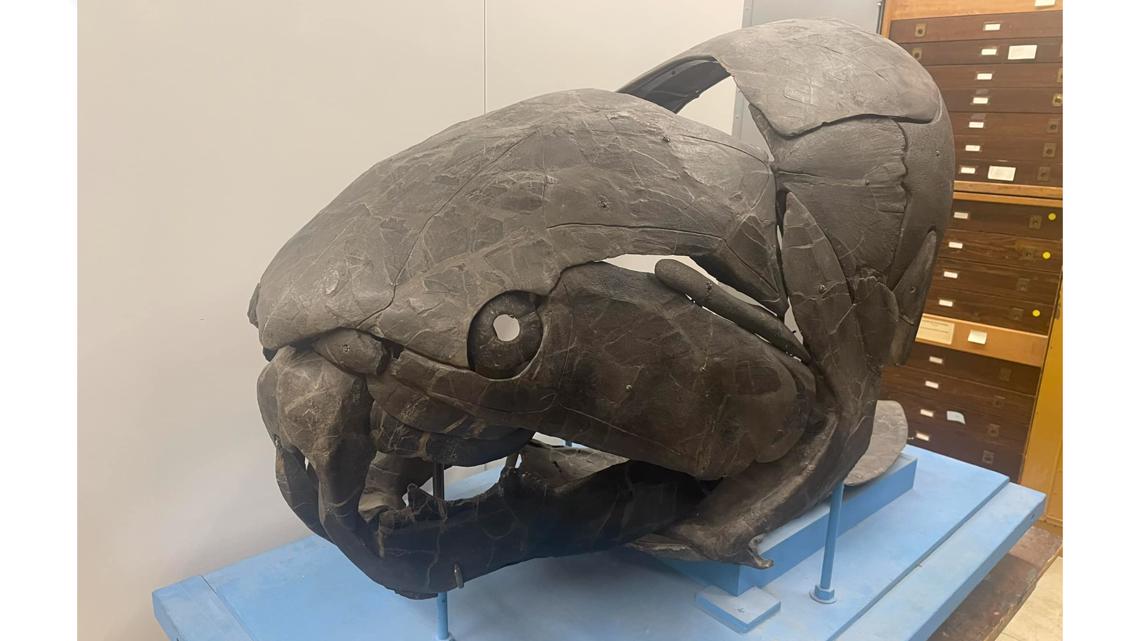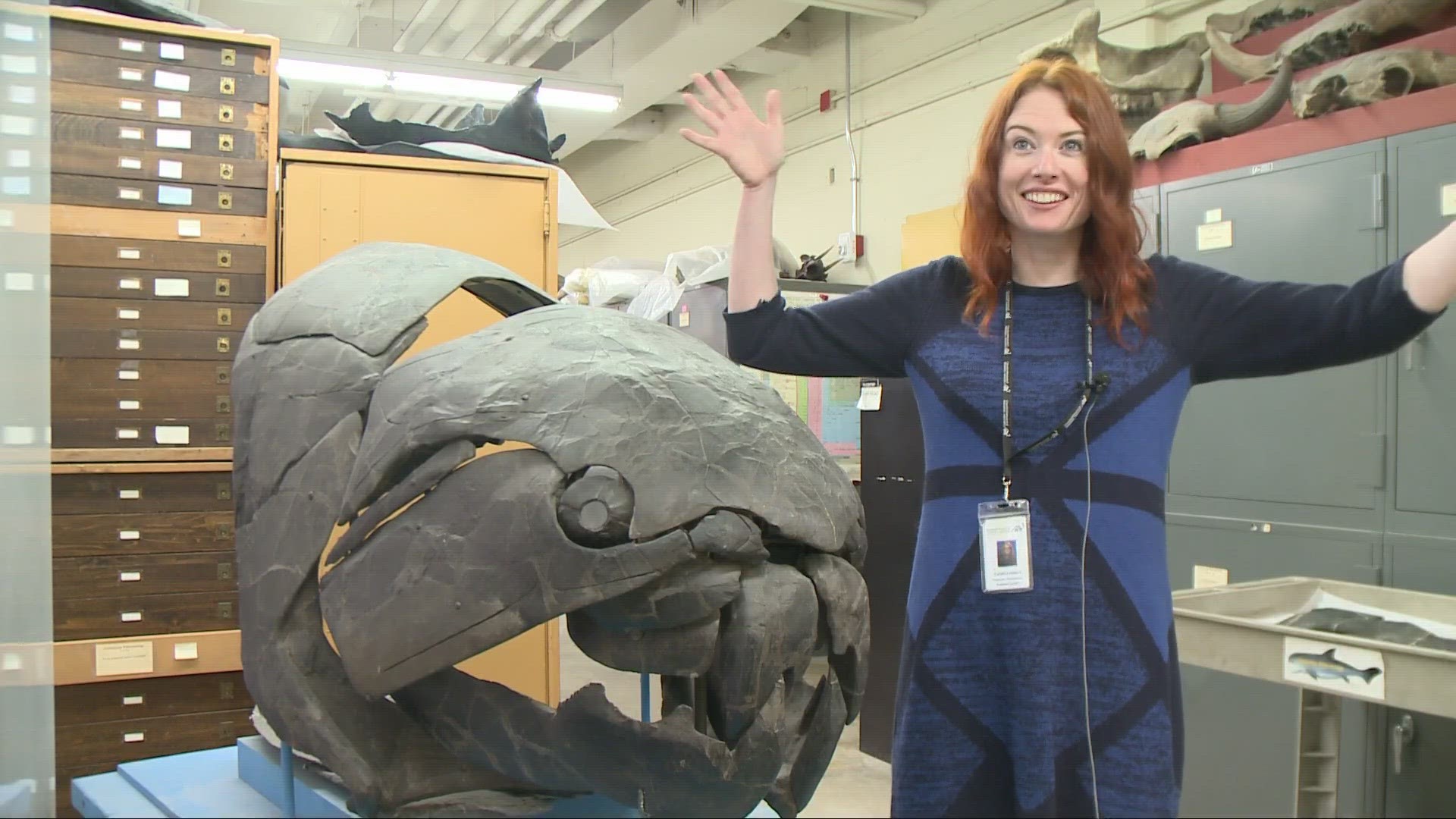CLEVELAND, Ohio — Deep in the basement of the Cleveland Museum of Natural History, they're telling fish stories.
"It was this big!" exclaims Dr. Caitlin Colleary, with arms outstretched.
The paleontologist isn't talking about a crappie, walleye or bass. This fish story goes story goes back a ways.
Dr. Colleary points to the bony-plated skull of an extinct giant carnivorous fish. "This is dunkleosteus. It was living here in Cleveland about 359 million years ago when Cleveland was the ocean."
The predatory fish was the terror of the Devonian seas and had some impressive adaptations for life in the tropical ocean.
"One of my favorite things about these animals is that they don't actually have real teeth. They sharpened their jawbones when they opened and closed their mouths, like scissors so they basically made their own teeth," explains Dr. Colleary.
The behemoth could open its hinged, bony jaw to expose a massive maw with which it gobbled up prehistoric sharks, mollusks, and even other "dunks."
They also had armored eyeballs tucked in their bony-plated heads. How cool is that?


The first "dunk" fossil was found in the 1860s on the shores of Lake Erie in Sheffield. Many specimens have been found in the Cleveland Shale deposit, some from along the Rocky River.
But as Dr. Colleary tells us, something is strange.
"We only find their heads preserved so we really don't actually know what their bodies looked like. Their bodies were probably cartilaginous and that's why we don't find them preserved," she says.
But they have found cartilaginous sharks in the same deposits as dunkleosteus, so there's hope for finding a body. It's something Colleary says would be a huge discovery. It would finally put to rest the current debate going on about the size of dunkleosteus.
Some say "dunk" was a 30-foot giant, as a Rocky River Nature Center model shows, but new research from Case Western Reserve University challenges that idea. They estimate the length of "dunk" using the measurement from its eye to behind the gill plate. There's a formula that can estimate total fish length based on this number. Those researchers say "dunk" was a real chunk! Much shorter and stockier, but still ferocious.
Scientists will continue fish for answers about this prehistoric predator.
This research is getting a lot of attention, but until a dunkleosteus body is found and scientists can get an actual measurement of the fish, the debate will continue. According to Dr. Colleary, "I would call this the most interesting fish story in Ohio."
One that's been around for 360 million years.

